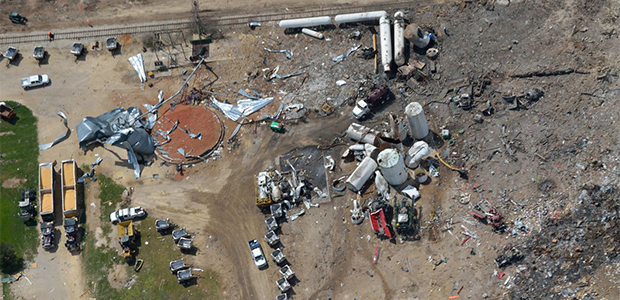
OSHA, DHS, EPA Release Blueprint for Improving Chemical Facilities' Safety
The report to the president was prepared in response to his Executive Order 13650, Improving Chemical Facility Safety and Security, issued in August 2013.
President Obama issued Executive Order 13650, "Improving Chemical Facility Safety and Security," on Aug. 1, 2013, directing several federal agencies to identify wants to increase the safety and security of chemical facilities and reduce risks associated with hazardous chemicals such as ammonium nitrate, the fertilizer that exploded in West, Texas, earlier that year. His order established a Chemical Facility Safety and Security Working Group to oversee the effort, chaired by EPA, DOL, and DHS, and leaders of those organizations on June 6 released their 121-page report, titled "Actions to Improve Chemical Facilities' Safety and Security – A Shared Commitment." It's a blueprint for actions that include revising OSHA's Process Safety Management regulation and EPA's Risk Management Program regulation.
"The issuance of the report is a milestone, not an endpoint. Agencies, in coordination with the broad range of stakeholders, have transitioned to implementation of these priority actions, which will be completed over time," the three working group chairs – OSHA Assistant Secretary Dr. David Michaels; Caitlin Durkovich, a DHS assistant secretary; and Mathy Stanislaus, assistant administrator of EPA's Office of Solid Waste and Emergency Response – wrote in a message at the start of the report. "We recognize that the Federal Government must put in place a transparent, inclusive process with the engagement and commitment of all stakeholders. The Working Group recognizes the invaluable contributions of the stakeholder communities that participated in each of the EO information-gathering efforts. This report highlights many of the comments we received, comments that provide context and underscore the findings and next steps. More information on the spectrum of stakeholder comments is available on the EO Webpage https://www.osha.gov/chemicalexecutiveorder. The Working Group strongly encourages stakeholders to continue to contribute to this dialogue by submitting successful practices to the chemical facility safety and security online best practices forum at https://www.llis.dhs.gov/topics/chemical-facility-safety-and-security or by providing direct feedback to the Federal departments and agencies via the EO docket or the [email protected] email address."
The report identifies priority actions in five broad areas, one of which is modernizing policies and regulations. These include establishing a cross-agency team of experts to standardize data and develop a common facility identifier; improving information tools for regulated chemicals; modernizing OSHA's PSM standard and EPA's RMP regulation; enhancing ammonium nitrate safety and security; promoting safer technology and alternatives; strengthening DHS' CFATS program; and working with Congress to increase OSHA’s monetary and criminal penalties.
The process of modernizing EPA's Risk Management Plan regulation would begin within a year, possibly adding or deleting chemical hazards and adding new requirements for automated detection and monitoring systems, requiring facilities to track and conduct root cause analyses of frequent process events and near misses, requiring stop work authority for employees who witness an activity that creates a threat of danger, and strengthening contractor safety requirements, among other measures.